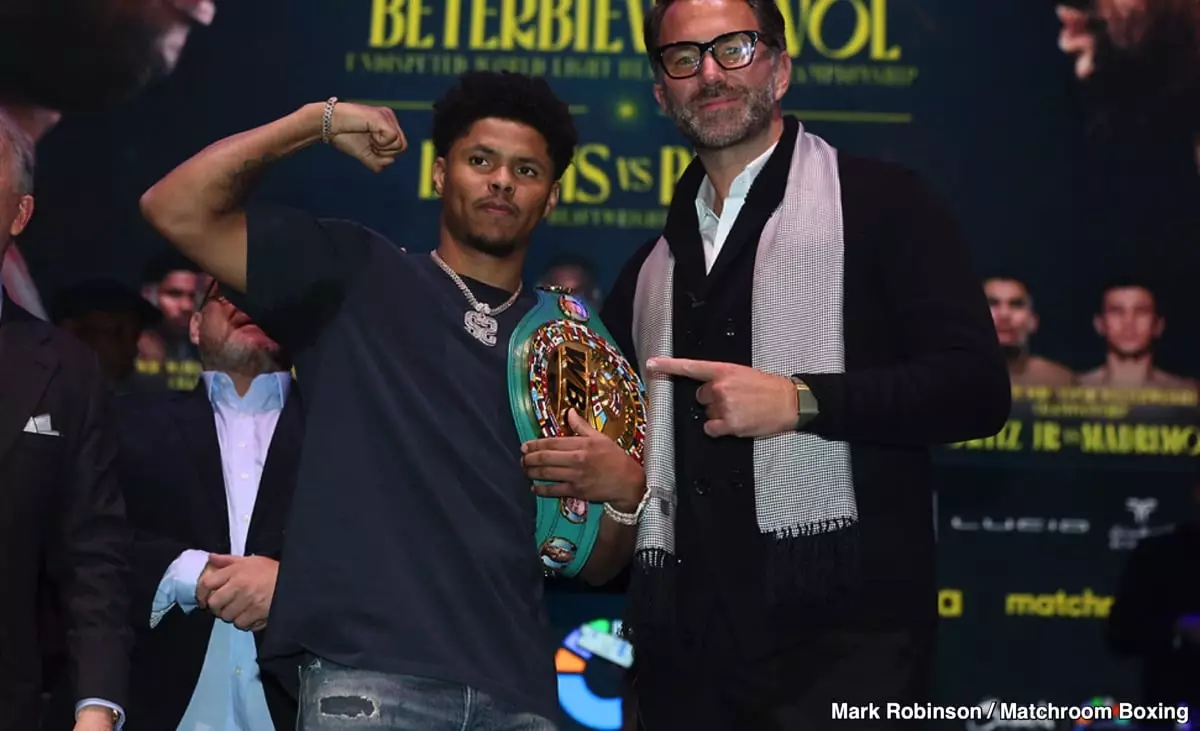The world of professional boxing frequently finds itself torn between the technical prowess of a fighter and their entertainment value. Recently, former champion Mikey Garcia expressed his reservations about a potential matchup between Shakur Stevenson and Gervonta “Tank” Davis, raising pivotal questions regarding the nature of boxing as both a sport and a spectacle. Garcia’s critique highlights the ongoing tension between boxing’s artistic aspects and the sheer excitement that fans crave.
Shakur Stevenson boasts an impressive record of 22 wins and no losses, with an admirable skillset encompassing speed, reflexes, and counter-punching ability. Despite these talents, Garcia asserts that Stevenson’s style lacks the excitement that fans desire. Garcia acknowledges Stevenson as an exceptional fighter worthy of the highest respect, yet he believes that Stevenson’s approachable and defensive style detracts from the potential thrill of a showdown with Davis. This perspective encapsulates a growing sentiment among fight aficionados: while technical fighters can dominate their opponents, they sometimes do so at the expense of compelling action within the ring.
Stevenson’s willingness to prioritize winning over crowd-pleasing might resonate with certain purists of the sport, but as Garcia points out, it can alienate a broader audience. Fans often look for memorable moments and explosive exchanges, which are integral to the allure of boxing. If fighters emphasize technical defense over offensive aggression, they run the risk of producing bouts that can feel lackluster. As Garcia notes, “As a fan, that turns me off”—a sign that the essence of boxing is evolving past mere technical displays into something that necessitates engagement and excitement.
In contrast to Stevenson, Gervonta Davis has established himself as a knockout artist with a penchant for captivating his audience. Davis’s style is marked by explosive power and a relentless offensive approach, rendering him a fighter whose matches draw considerable attention. Garcia’s preference for seeing Davis face opponents like Vasily Lomachenko rather than Stevenson illustrates a broader appeal for matchups that promise to deliver high-octane action. Lomachenko’s respect for the craft combined with an aggressive fighting style ensures that fights featuring him are often thrilling spectacles.
This distinction begs the question: What is the matchmaking criteria should look like when considering fan engagement? Garcia posits that the chemistry between a fighter’s style and their opponent’s approach can significantly influence a match’s entertainment value. A fight between Davis and Lomachenko, for instance, offers the potential for a high-stakes battle that marries skill with excitement, ensuring fans leave satisfied. The anticipation of seeing explosiveness meet artistry creates an enticing narrative that resonates with fight fans.
As Stevenson looks to carve out his legacy, he faces a notable challenge: how to evolve his approach without sacrificing the defensive strategy that has brought him success. Mikey Garcia suggests that until Stevenson adapts his style to invite more action and risk, he may struggle to attract lucrative and thrilling matchups. The perception that Loma and Tank could offer more explosive contests places Stevenson in a precarious situation where he must choose how to navigate his career.
Moreover, the dynamics brought to the table by promoters like Turki Al-Sheikh add another layer of complexity. If lucrative offers incentivize Davis to step into the ring with Stevenson, it could rejuvenate the latter’s career. Here lies the crux of the argument: matchups must be appealing not only on paper but also in execution, weaving together the elements of style, skill, and fan engagement.
The boxing landscape is presently at a crossroads between fighters like Shakur Stevenson, who exemplify skill and strategy, and those like Gervonta Davis, who embody the fan-favorite persona built on explosive combat. As Mikey Garcia articulates, there is a critical need for a balance between artistry and entertainment if fighters aim to secure their legacy in a sport that ultimately thrives on earning the hearts and cheers of fans. The future of captivating boxing measurements will continue to depend upon wrestling with this tension, ensuring that both skill and excitement remain at the forefront of the sport’s evolution.

